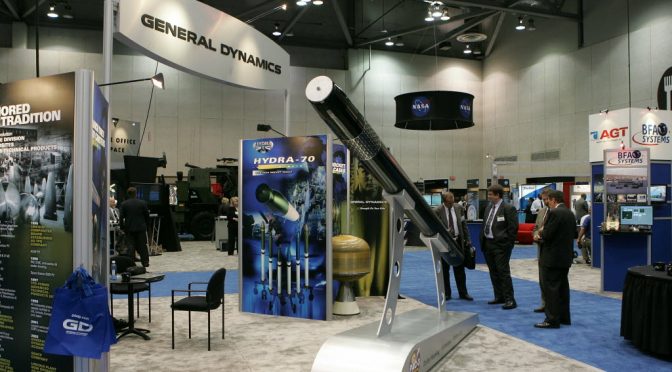Despite campaign rhetoric promising a smaller government, defense contractors are confident that the new Republican congressional majority will boost spending on their industry.
“Friends, this experiment with big government has lasted long enough,” Mitch McConnell, the Republican majority leader, said on election night last November, echoing a common theme among GOP candidates. McConnell’s party won control of the U.S. Senate and increased its ranks in the House of Representatives in the midterm elections.
For voters promised a leaner federal budget, certain areas, such as food stamps, are already in the crosshairs of legislators. But for the nation’s cyberspying companies and military contractors, “some measure of relief,” is on the way.
That’s how George Pedersen, the chief executive of ManTech International Corp., a defense contractor that works closely with the National Security Agency, described the expected boost in military spending during a call with investors last week.
Pedersen, explaining that the days of defense cuts are “behind us,” credited the shift with the change in control of Congress. “We do not know how the new Republican Congress will work with the president and the new secretary of defense,” he noted. But Pedersen predicted that Sen. John McCain, R-Ariz., and Rep. Mac Thornberry, R-Texas, the new chairs of the Armed Services committees, will move “forward an expanded defense budget.”
Other executives share that view.
“Our first quarter is usually our worst,” said Tom Brown, president and CEO of LRAD Corp., makers of a sonic-cannon crowd dispersal weapon developed by the Pentagon. “However,” he told financial analysts, “in 2015, we are off to a good start,” citing continued growth for the LRAD business “both internationally and with the new Republican Congress,” which he anticipated will produce an “increase in the U.S. defense budget.”
Jim Peterson, the chief executive of Microsemi Corp., a manufacturer of aerospace and systems technology for the military, could barely contain his excitement.
Asked by a financial analyst how the election would impact his company, Peterson said, “I try to keep away from politics.” Then, holding back a laugh, he said, “but it was nice to see people get out and vote.” He then clarified, “there seems to be a stronger lean towards defense and security spending by another party called the Republicans.”
During the 2014 campaign cycle, defense companies spent over $59 million in disclosed campaign donations, with money spread among candidates of both parties. The real amount spent on the last election, however, is not known to the public given that corporate interests have increasingly disguised their campaign cash through undisclosed non-profits under the 501(c)(6) and 501(c)(4) sections of the tax code.
Earlier this month, President Obama released a budget widely perceived as designed to both boost the defense budget and kill the sequester. The ploy, according to Democratic leaders, is to divide the remaining Republicans wary of defense hikes from hawks in the party to win an overall end to the budget-cutting trend in federal spending. By forging a compromise, spending levels can be increased across the board.
If a budget deal is not reached, sequester-level budget cuts in line with the 2011 Budget Control Act kick in, creating automatic reductions in defense spending, an outcome now vehemently opposed by many in Congress.
The strategy plays to the growing power of the more militaristic, defense lobby-friendly wing of the GOP, which now wields increasing influence despite media proclamations of a new libertarian mindset within the party. “I think one of the most critical tasks for Congress this year is going to be finding a way to increase defense spending for fiscal year 2016,” declared Rep. Matt Salmon, R-Ariz., warning of the looming threat of sequester cuts at a retreat for GOP legislators last month.
If recent history is a guide, Wall Street and the defense contracting industry have much to look forward to.
In the lame-duck session of the last Congress, a bipartisan agreement to prevent another government shutdown was reached by filling the stop-gap spending measure with over $1.2 billion in military purchases that weren’t requested by the Pentagon.
Among the sweetheart, earmark-like items in the package was $120 million more for the M-1 Abrams tank program. Military planners have asked time and time again for Congress to stop funding Abrams tanks, which are outdated for most modern warfare and have repeatedly been destroyed by improvised explosive devices. In a symbolic display of government waste, over 2,000 of these tanks are now stored in the California desert, where they remain unused and unwanted. For the Obama administration and Republican leaders to get along, expect the purchase of more wasteful scraps of metal like these.

Photo: General Dynamics Land System/AP
source »
We can help bring down the Cabal and defeat the Depopulation Agenda
Big Pharma is one of the sources of funds for the Cabal. It also serves as the weapon of mass destruction via vaccine tainted with live virus it is suppose to protect us from, and the deadly chemicals use to treat our diseases that they caused through our GMO / pesticide contaminated food supply.
We can avoid using drugs, defeat any viral attack and scaremongering easily by knowing how to build our own comprehensive antiviral system. Find more about it here.



